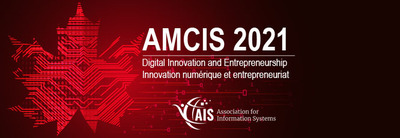Loading...
Paper Number
1138
Theme Table
11
Abstract
The Digital Sharing Economy (DSE) is made up of manifold sharing models that are diverse in their basic business model components; i.e., the type of resource provider (“From”), resource recipient (“To”), shareable resource (“What”), and sharing practice (“How”). This diversity can be mapped into a 4- dimensional space (see Figure 1). The 4 types of resource providers are individuals, for-profit organizations, non-profit organizations, and the public sector; the same applies to resource recipients. Shareable resources can be classified in 8 types based on whether they are material or immaterial, and durable or consumable. When a durable material good is shared, its unused capacity comes into utilization, either to serve multiple demands concurrently (free capacity) or sequentially (idle capacity). Consumable material goods, such as food, are used up when consumed. They can be either sufficient for all consumers or there could be an abundant availability of them to share, e.g. to avoid waste. Competence and durable information goods (such as software) are subsumed under durable immaterial goods. Time and consumable information goods (i.e. volatile information that loses value rapidly over time, such as information on the traffic situation) belong to the category of consumable immaterial goods. Sharing practices can be classified depending on whether there is an expectation of something in return or not (formal vs. informal) and whether the exchange is reciprocal, compensation-based, or price-based; direct or indirect (to the same provider vs. to the community); upstream or downstream in case of indirect exchange; and immediate or delayed (while sharing takes place or later). Overall, based on the various combinations of these exchange types, 43 different sharing practices could exist in the DSE. Figure 1 shows a typology of digital sharing models (4 types of resource providers * 4 types of resource recipients * 8 types of sharable resources * 43 types of sharing practices = 5504). Any instance of the DSE can be represented by a corresponding vector in the “FTWH space”. For example, Airbnb is coded as (F1, T1, W2, H22). The typology can also inspire entrepreneurs to design digital sharing systems that do not exist yet.
Recommended Citation
Pouri, Maria J., "5504 Sharing Models in the Digital Sharing Economy" (2021). AMCIS 2021 TREOs. 52.
https://aisel.aisnet.org/treos_amcis2021/52
Rate Potential Impact
Rate Novelty/Interesting
When commenting on articles, please be friendly, welcoming, respectful and abide by the AIS eLibrary Discussion Thread Code of Conduct posted here.


